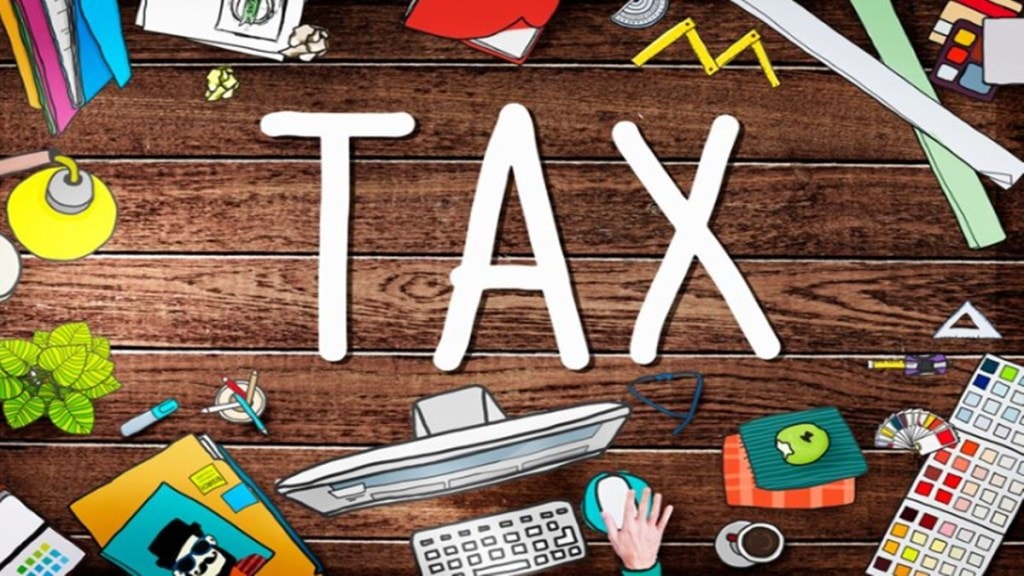Tax receipts refer to the total amount of revenue collected by the government through various taxes imposed on individuals, businesses, and other entities within a specific period, typically a fiscal year. These receipts are crucial as they constitute a significant portion of government revenue, funding public services, infrastructure projects, social welfare programs, and other essential expenditures. India’s tax receipts data reveal higher collections from direct taxes compared to indirect taxes over the past decade.
Types of Tax Receipts:
Gross Tax Receipts:
Gross tax receipts encompass the total amount of revenue generated from all types of taxes collected by the government. It includes both direct taxes and indirect taxes. For example, if a government collects Rs. 10 lakh crore in taxes from all sources in a fiscal year, this would represent its gross tax receipts.
Direct Tax Receipts:
Direct taxes are levied directly on individuals and businesses based on their income, profits, or assets. These taxes are typically progressive, meaning higher-income earners pay a higher percentage of their income in taxes compared to lower-income earners. Examples of direct taxes in India include income tax, corporate tax, and wealth tax.
Example: Suppose Mr. A earns an annual income of Rs. 15 lakh. If the income tax rate applicable to his income bracket is 30%, he would owe Rs 4.5 lakh as income tax to the government. This Rs. 4.5 lakh is a direct tax receipt for the government.
Indirect Tax Receipts:
Indirect taxes are imposed on goods and services rather than directly on individuals or businesses. These taxes are included in the prices of goods and services and are ultimately paid by consumers. Examples of indirect taxes include Goods and Services Tax (GST), excise duty, customs duty, and service tax.
Example: If a consumer buys a smartphone priced at Rs. 50,000, and the GST rate applicable is 18%, the indirect tax receipt for the government would be Rs. 9,000 (18% of Rs. 50,000) collected as GST from the sale of that smartphone.
Take a look at the trends from 2014-15 to the Budget Estimates of 2023-24.
The Revised Estimates (RE) 2023-24 of the total receipts other than borrowings is Rs 27.56 lakh crore, of which the tax receipts are Rs 23.24 lakh crore. In Budget Estimates of 2024-25, the tax receipts are estimated at Rs 26.02 lakh crore.
Government receipts (excluding borrowings) for the fiscal year are estimated at Rs 27,16,281 crore, reflecting an 11.7% increase over the revised estimates of 2022-23. To cover the gap between these receipts and total expenditure, borrowings are budgeted to amount to Rs 17,86,816 crore, marking a 1.8% increase over the revised estimate of borrowings for 2022-23.
What about Direct Taxes?
The Finance Minister proposed to retain same tax rates for direct taxes in the interim Budget 2024-25. Here are some more highlights:
-Direct tax collection tripled, return filers increased to 2.4 times, in the last 10 years
-Outstanding direct tax demands upto Rs 25000 pertaining to the period upto FY 2009-10 withdrawn
-Outstanding direct tax demands upto Rs 10000 for financial years 2010-11 to 2014-15 withdrawn. This will benefit one crore tax payers
-Tax benefits to Start-Ups, investments made by Sovereign wealth funds or pension funds extended to March 31, 2025.
-Tax exemption on certain income of IFSC units extended by a year to March 31, 2025 from March 31, 2024.
What about Indirect taxes?
-The finance minister proposed to retain same tax rates for indirect taxes and import duties. Here are more highlights from the interim Budget 2024-25:
-Average monthly gross GST collection doubled to Rs 1.66 lakh crore this year
-GST tax base has doubled
-State SGST revenue buoyancy (including compensation released to states) increased to 1.22 in post-GST period(2017-18 to 2022-23) from 0.72 in the pre-GST period (2012-13 to 2015-16)
-94% of industry leaders view transition to GST as largely positive
-GST led to supply chain optimization
-GST reduced the compliance burden on trade and industry
-Lower logistics cost and taxes helped reduce prices of goods and services, benefiting the consumers
